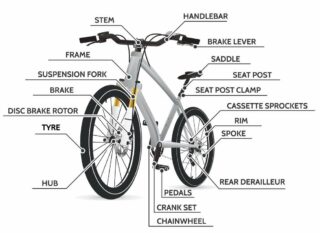Written by hand therapist Catherine Reid, B.App. Sci, (OT), M.Sci (H&UL rehab), MAHTA (As awarded by the AHTA), CHT(USA)
A surgeon once told me that the human body’s most elegant anatomy was in the hand. I might be slightly biased, but I had to agree! The hand is amazing and complex in the way it’s structured and works.
There are 27 bones in your hand compared with just 3 in your leg. These bones are moved by over 30 muscles, all working in unison to provide smooth, coordinated movements. Your nerves help you control these movements enabling you to adjust your strength or fine coordination to suit the task.
Your hands can convey your feelings through touch and gesture and help to communicate your thoughts. In fact, some people will tell you they can’t talk without using their hands!
Your wrists, elbows and shoulders work together to position your hands in space. Any problem along the chain of your upper limbs affects your ability to fully function. Imagine how difficult it would be to reach up to do your hair if your shoulder was stiff, or to do downward dog in yoga with a painful wrist!
We connect with the world through our hands, performing everyday activities, and many of us earn our living with our hands. That’s why it’s essential that we take good care of our hands.
For some people, this may include seeing a professional.
What is hand therapy?
Considering the importance of our hands, it should be no surprise that there are professionals devoted solely to their rehabilitation.
Hand surgeons are either orthopaedic or plastic surgeons who’ve undergone additional training and study to specialise in treating problems of the hands, wrists and arms. They may use surgical and/or non-surgical treatments.
Hand therapy practitioners are qualified physiotherapists or occupational therapists registered with the Allied Health Practitioner Regulation Agency (AHPRA). They have extensive knowledge and skill in understanding and treating problems with the fingers, wrists, elbows and shoulders. The Australian Hand Therapy Association (AHTA) defines hand therapy as “the art and science of rehabilitation of the upper limb – shoulder to fingertip”.
What is an Accredited Hand Therapist (AHT)?
In 2017, the Australian Hand Therapy Association implemented a credentialing program to ensure accredited therapists offer a high standard of practice. All Accredited Hand Therapists have undertaken advanced education and assessment of the upper limb and have had over 3,600 hours of hand therapy clinical practice. After they’re assessed as competent to provide safe, evidence-based diagnosis, advice, and treatment, they’re awarded the credential of Accredited Hand Therapist by the Australian Hand Therapy Association Credentialing Council.
What conditions are treated?
Accredited Hand Therapists diagnose and treat a large variety of musculoskeletal conditions of the upper limb. They include:
- arthritis
- nerve compressions (e.g. carpal tunnel syndrome)
- fractures, joint injuries and dislocations
- tendinopathies (e.g. tennis elbow) and other soft tissue injuries
- pain conditions
- nerve and tendon injuries
- burns and scar management
- sporting injuries
- work-related injuries
- post-surgical conditions.
What happens at an appointment?
When you meet with an Accredited Hand Therapist, you’ll work together to develop a treatment plan. It will take into consideration your specific situation, symptoms, and the environment in which you live and work.
Some treatments aim to resolve a problem, for example, improving muscle strength or range of motion after a fracture. Some treatments may be preventive and involve teaching you to manage symptoms like pain or swelling in response to an injury or illness.
Assessments may involve specific measurements; for example, the therapist measures your wrist’s range of movement or grip strength. Assessments also include your experience of the problem, for example, when you describe the location of the problem, how your symptoms feel and affect you, and the things you noticed or experienced when you first noticed your symptoms.
Treatments often use heat, ice or electrotherapy to improve healing, orthoses (splints) to rest soft tissues (e.g. muscles, tendons, ligaments), and specifically targeted exercises to improve movement and strength.
You’ll be encouraged to complete a home program when possible, so education will also be a large part of your treatment.
To achieve the best outcomes, therapists may collaborate with other health professionals such as hand surgeons, rehabilitation consultants or GPs.
Where do I find an Accredited Hand Therapist?
Accredited Hand Therapists can be found throughout Australia in private practice (sometimes co-located with hand surgeons), in public hospitals and in community settings. In Australia, there are over 400 Accredited Hand Therapists in metropolitan, rural and remote locations. You can contact a hand therapist through the AHTA “Find an Accredited Hand therapist” web page or email the AHTA at enquire@ahta.com.au.
You use your hands all day long, so receiving the best care to recover after surgery, injury, or a medical condition is essential. Your hands deserve the best, and so do you!
Contact our free national Help Line
Call our nurses if you have questions about managing your pain, musculoskeletal condition, treatment options, mental health issues, COVID-19, telehealth, or accessing services. They’re available weekdays between 9am-5pm on 1800 263 265; email (helpline@msk.org.au) or via Messenger.











